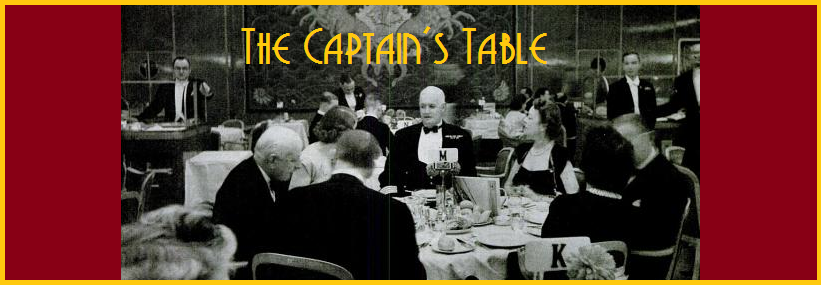The great ocean liners of the 1930s were mobilized as the Second World War erupted and plunged Europe into another bloody conflict. Perhaps the grandest of them all, the Queen Mary was activated as a troopship in March 1940. She began her service transporting ANZACs, but would become famous for carrying American GIs from New York to the Scottish port of Gourock.

The Queen Mary would ultimately carry over 800,000 troops to all corners of the world and play a role in every major Allied campaign of the war - most of her passengers were Americans. She would also take the world record for the most number of people ever embarked on a single ship: 16,683 in July 1943. That record still stands (which is probably a good thing). But since the U.S. Army was integrated during this period, I've often wondered how black soldiers were treated aboard the Queen Mary. The bit of information that I've been able to find on the subject comes from Howard Zinn's autobiography, You Can't Be Neutral on a Moving Train:
The officers on board were all given supervisory jobs, and mine was to "keep order" in the huge mess hall where the troops ate twice a day, in four shifts. The four thousand black soldiers on board, who slept in the depths of the ship near the engine room, ate last.
(It seems absurd - but is so typical of whites in this country - that I hadn't noticed the absence of blacks in basic training at Jefferson Barracks until one day I took a long walk through the base and found myself in an all-black environment. What I remember most vividly is a squad of black soldiers taking a break on the grass near me, singing "Ain't Gonna Study War No More!" I was startled. I had never heard white troops sing that.)
On the fifth day at sea, there was a mix-up, and the last shift was sent into the mess hall before the previous one was finished eating - four thousand black men pouring into the hall, filling in wherever other men had finished and left. It was now, accidentally, a racially integrated dining hall.
"Lieutenant!" A white sergeant, sitting next to a black man, was calling to me. "Get him out of here until I finish." This angered me, and for the first time in my military career I pulled rank. I shook my head. "If you don't want to finish your food, you can leave. What the hell is this war all about, sergeant?" It was a long way to the next meal, and the sergeant stayed and ate. I learned something from that little incident, later reinforced in my years in the South: that most racists have something they care about more than racial segregation, and the problem is to locate what that is.

References: Howard Zinn, You Can't Be Neutral on a Moving Train: A Personal History of Our Times (Boston: Beacon Press, 2002), 91-92.

 Mr. Nielsen would again take "command" in 1985. An episode of "Murder, She Wrote" found Jessica Fletcher (Angela Lansbury) aboard a ship bound for the Caribbean and under the command of a Captain Daniels. No doubt the producers thought it would funny to have him reprise his role. Thankfully the ship fared better.
Mr. Nielsen would again take "command" in 1985. An episode of "Murder, She Wrote" found Jessica Fletcher (Angela Lansbury) aboard a ship bound for the Caribbean and under the command of a Captain Daniels. No doubt the producers thought it would funny to have him reprise his role. Thankfully the ship fared better. 

















